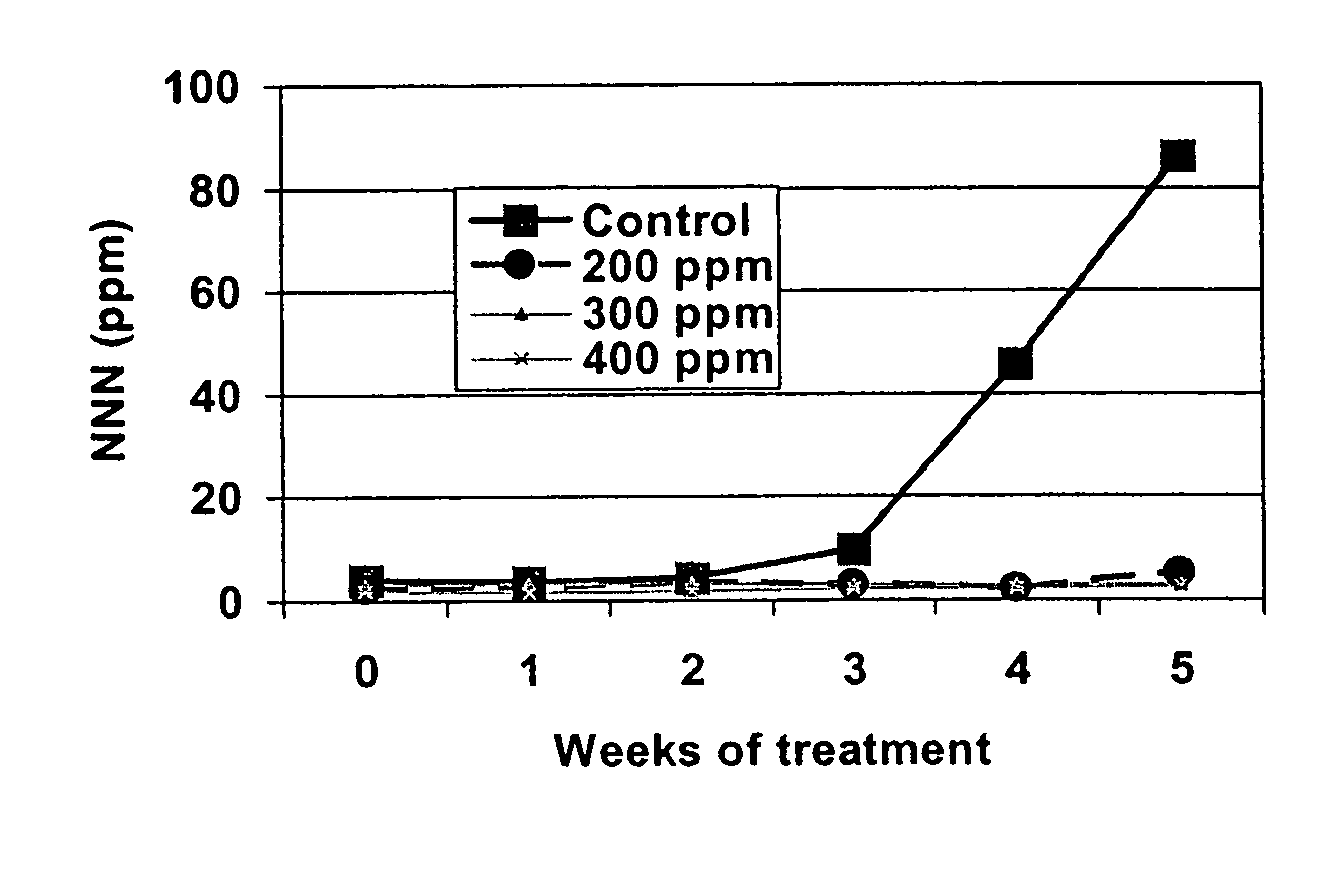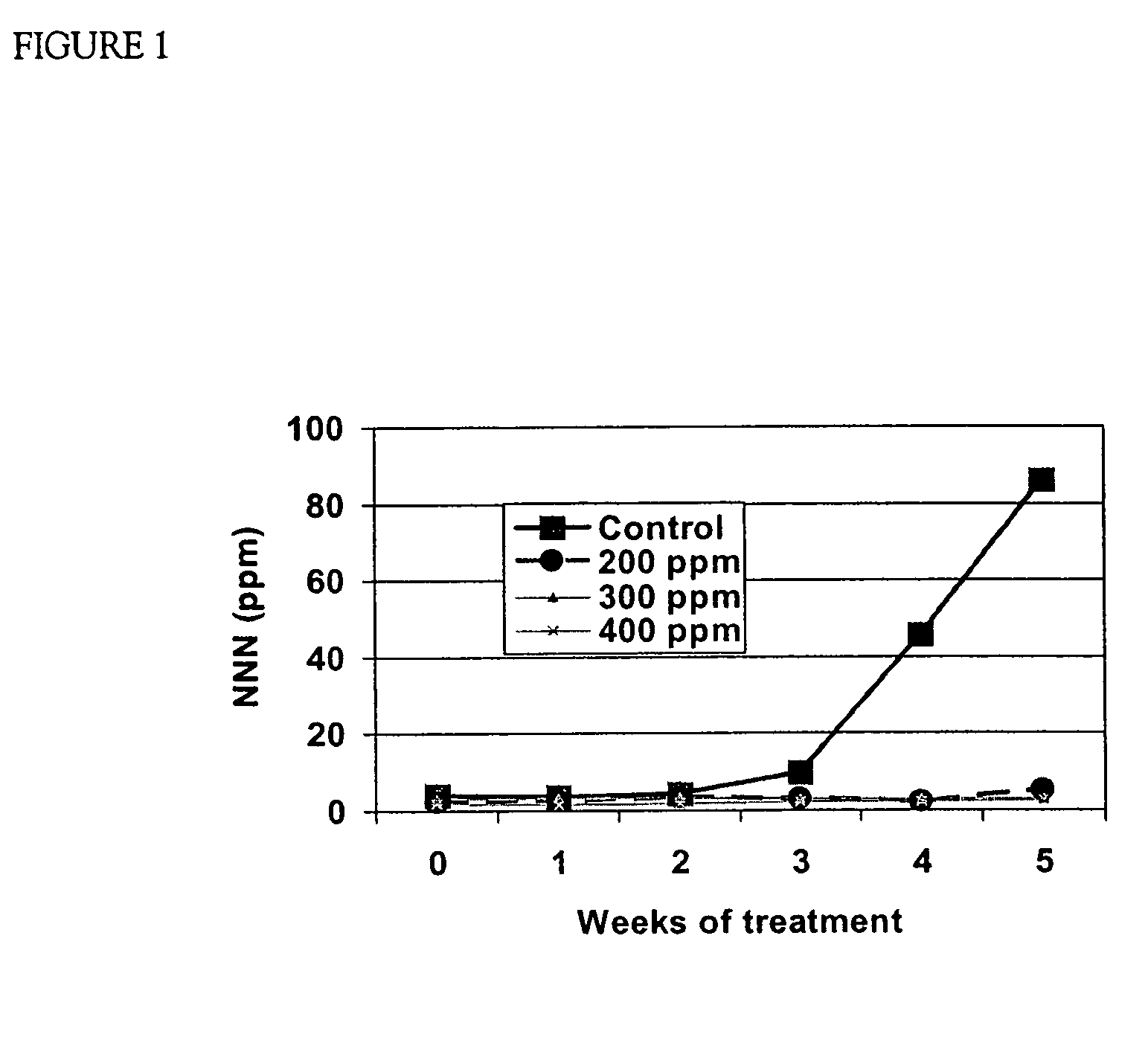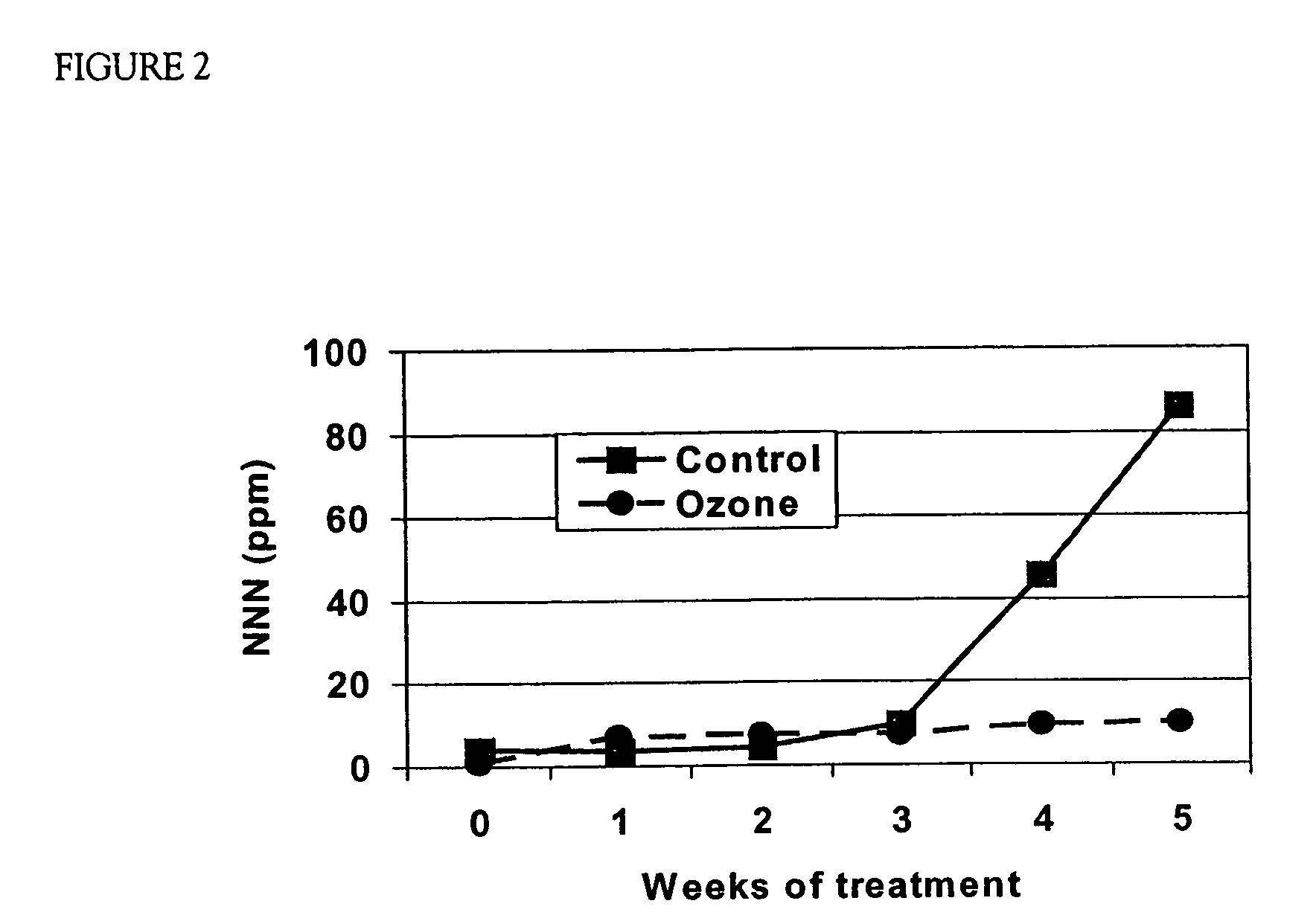Use of chlorate, sulfur or ozone to reduce tobacco specific nitrosamines
a nitrosamine and chlorate technology, applied in tobacco treatment, tobacco preparation, tobacco, etc., can solve the problems of loss of cell compartmentalization, loss of membrane integrity, and low tsnas levels, so as to reduce the potential for tsna formation and reduce the bacterial population found
- Summary
- Abstract
- Description
- Claims
- Application Information
AI Technical Summary
Benefits of technology
Problems solved by technology
Method used
Image
Examples
example 1
[0031]300 ppm NaClO3 aqueous solution with a small amount of kitchen soap as a surfactant was used as pre-curing treatment with the following procedures / treatments for 2004 testing (a) spray 1 day before harvest, (b) spray 1 day before and 1 day after harvest and (c) 7 days before and 1 day before. Results of further chlorate treatments are set forth in FIG. 1 which illustrates NNN accumulation in lamina of cured TRM converter tobacoo in 5 weeks at 90% RH micro-barn condition (Control vs. Chlorate).
example 2
[0032]Results of ozone treatments are set forth in FIG. 2 which illustrates NNN accumulation in lamina of cured TRM converter tobacoo in 5 weeks at 90% RH micro-barn condition (Control vs. Ozone).
PUM
 Login to View More
Login to View More Abstract
Description
Claims
Application Information
 Login to View More
Login to View More - R&D
- Intellectual Property
- Life Sciences
- Materials
- Tech Scout
- Unparalleled Data Quality
- Higher Quality Content
- 60% Fewer Hallucinations
Browse by: Latest US Patents, China's latest patents, Technical Efficacy Thesaurus, Application Domain, Technology Topic, Popular Technical Reports.
© 2025 PatSnap. All rights reserved.Legal|Privacy policy|Modern Slavery Act Transparency Statement|Sitemap|About US| Contact US: help@patsnap.com



